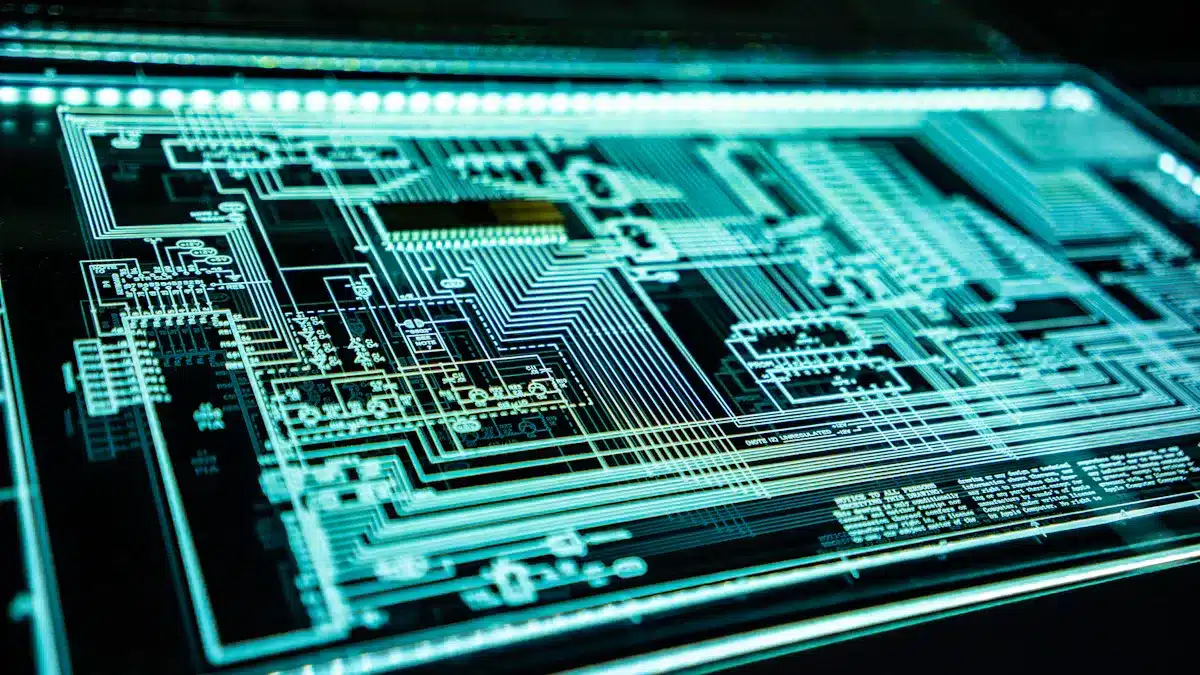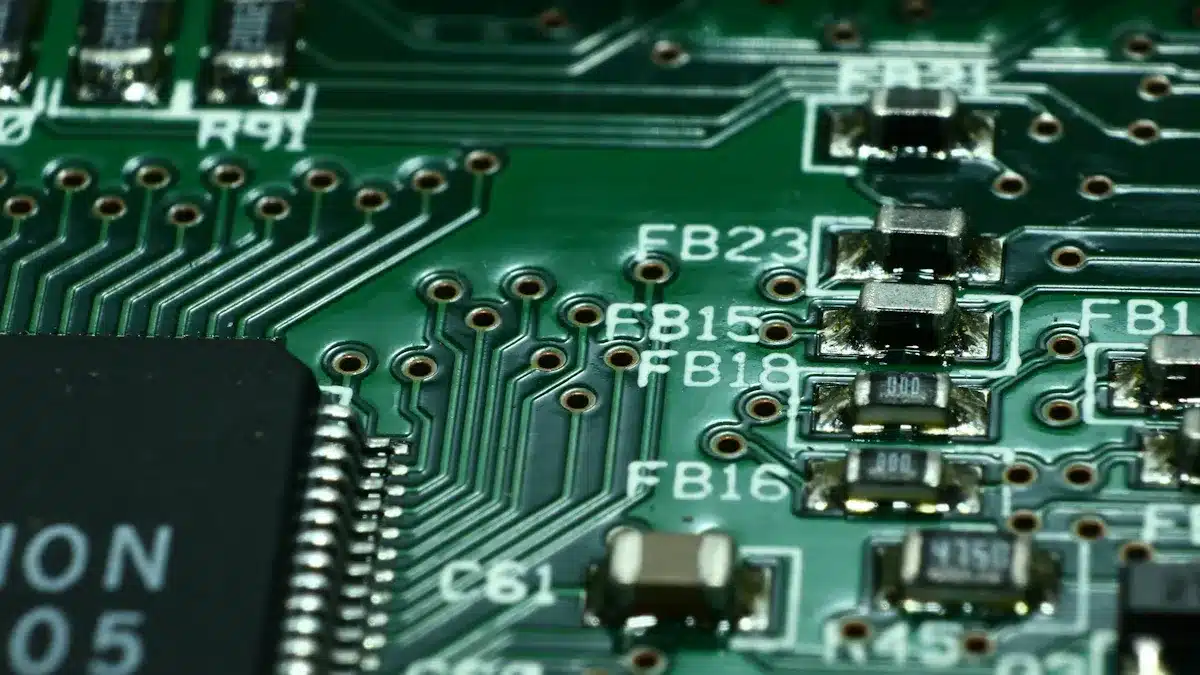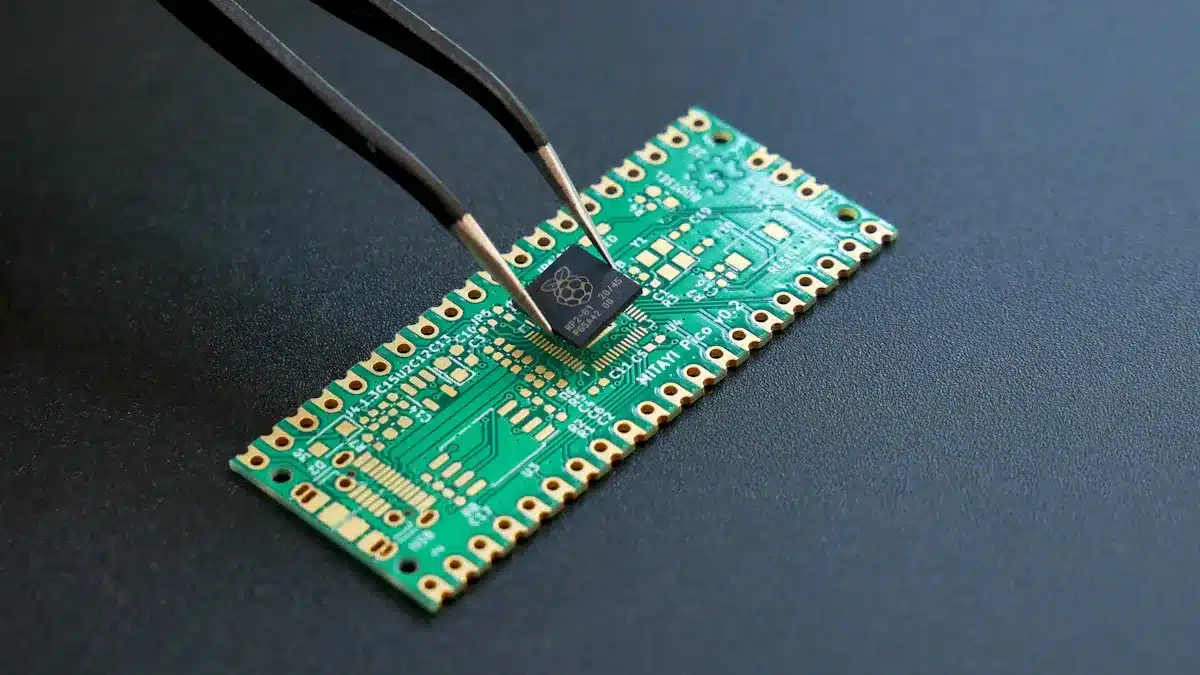
The need for pcb board prototype services has grown significantly in recent years. As technology advances, industries increasingly rely on prototypes to test and enhance their designs. The market for these services is projected to rise from $4.8 billion in 2024 to $9.1 billion by 2033, indicating a compound annual growth rate (CAGR) of 7.2%. This growth underscores the importance of high-quality pcb board prototypes in product development. Understanding how to evaluate these services will empower you to make informed decisions for your projects.
Key Takeaways
Learn about the different types of PCB prototypes: Visual, Working, and Functional models have special roles in design testing.
Check pricing models closely: Think about material choices, surface finishes, and production amounts to find what fits your budget.
Focus on quality assurance: Good communication with your provider and careful testing can stop expensive mistakes in the final product.
Pick the right materials: Choosing the right materials based on use and budget can improve performance while keeping costs down.
Compare providers: Look at features like cost, turnaround time, and quality to choose the best PCB prototyping service for you.
PCB Prototyping Overview

PCB prototypes are very important in making electronics. They let you test and check your designs before starting full production. Knowing the different types of PCB prototypes helps you pick the right one for your project.
Types of PCB Prototypes
Here are the main types of PCB prototypes you might see:
Type of PCB Prototype | Description |
|---|---|
Visual Models | Used to check design looks, may not have real parts. |
Working Models | Test function without final materials, has key parts. |
Functional Models | Very close to the final product, tests all functions and features. |
Each type has a special purpose, helping you focus on different parts of your design.
Prototype vs. Volume Production
When you look at PCB prototypes and volume production, some big differences show up. Knowing these differences can help you make better choices.
Aspect | PCB Prototypes | Volume Production |
|---|---|---|
Design Flexibility | Allows many design changes for testing | Strict change rules, expensive changes |
Quality Priorities | Focus on basic function tests | Strong reliability checks and lots of testing |
Materials and Processes | Cheaper materials and quick methods | High-quality materials and advanced methods |
Cost Structures | Higher costs per unit, cheap for testing | Lower costs due to large-scale production |
Manufacturing Tools | Simple tools for fast changes | Automated tools for high accuracy |
Prototyping is about flexibility and speed, while volume production is about consistency and reliability. Understanding these differences helps you use PCB prototype services better.
Key Factors in PCB Prototype Services
When you choose a PCB prototype provider, think about some important factors. Pricing models and quality checks are very important for finding the best service for you.
Pricing Models
Knowing the pricing models used by PCB prototype services helps you decide better. Here are some common pricing models:
Pricing Model | Description |
|---|---|
Material Choice | The materials like FR-4, Rogers, or Polyimide change the cost a lot. |
Surface Finish Options | Different finishes (like HASL, ENIG) cost different amounts and affect performance. |
Production Quantity | Costs per unit go down with larger orders because of shared setup costs. |
Economies of Scale | Bigger orders help lower costs since fixed costs are spread over more units. |
These factors affect how much your prototype printed circuit board will cost. You should think about your project needs and budget to pick the best pricing model.
Quality Assurance
Quality checks are very important in PCB prototyping. Good communication between you and the PCB prototype provider before starting helps ensure success. This teamwork helps everyone understand what the manufacturer can do.
After prototyping, skilled technicians do careful testing. They look for lamination problems, cleanliness, electrical issues, and circuit impedance. This thorough testing makes sure the PCB meets quality standards before mass production.
Also, PCB prototype service providers usually have many engineers compared to assemblers. This staffing plan allows for good technical oversight during prototyping. Engineers check each prototype for problems, finding and fixing issues early. This way, the final product is reliable and works well.
Besides quality, turnaround time is also very important. A fast PCB prototype service usually delivers in 24–72 hours. Quick turn PCB assembly services help startups and small orders, focusing on speed and quality.
Finally, think about how shipping costs affect the total price of PCB prototype services. Shipping and packaging add to the overall cost. Bigger PCBs might have higher shipping costs because they need protective packaging. Fast shipping methods, like air freight, can also raise costs, which you usually have to pay.
By knowing these key factors, you can make better choices when picking PCB prototype services that fit your needs.
Cost Comparison: Prototypes vs. Volume
When you look at the costs of PCB prototypes and volume production, you will see big differences. Prototypes usually cost more per unit. This is because of material waste and manual setups. On the other hand, volume production lowers costs by using materials efficiently and automation. Here are some important factors that affect these costs:
Materials and Components: The type of substrate materials and copper weight impacts both function and cost.
Board Size and Complexity: Bigger and more complex boards need more materials and advanced processing, which raises costs.
Quantity and Production Volume: More production lowers the cost per board because of economies of scale.
Lead Time Requirements: Fast orders can cost more because of prioritization and overtime.
Testing and Quality Control: Better testing methods increase costs but help avoid future problems, making them a good investment.
Labor and Location: Labor costs change by location. Domestic manufacturing is usually pricier but has benefits like faster turnaround time.
Pricing for PCB Board Prototype
The price of prototype PCBs changes based on design complexity. For instance, 2-layer PCB prototypes are much cheaper than multilayer ones. Here are some reasons why:
2-layer boards are easier and need fewer raw materials.
Multilayer boards, like 4-layer designs, can cost almost double because of:
Extra raw materials
More complicated fabrication processes
Lower panel utilization yield
Fewer volume orders
Even with higher costs, multilayer boards may be worth it for certain uses because of better performance.
Volume Production Costs
When you check volume production costs, you will see they often offer better pricing options. Different providers have different pricing structures. Here’s a comparison of some well-known PCB manufacturers:
Provider | Volume Production Support | |
|---|---|---|
JLCPCB | $2 for 10 boards | Small-volume production (up to thousands) |
PCBWay | $5 for 10 boards | Not specified |
OSH Park | $5 per square inch | Not specified |
Seeed Studio | Competitive pricing | Not provided |
This table shows how prices can differ among various providers. Knowing these differences helps you pick the best PCB manufacturers for your needs.
Optimizing Costs for High-Quality Prototypes
Design Strategies
You can save money and keep quality in your PCB prototypes by using smart design strategies. Here are some important methods:
Strategy | Description |
|---|---|
Use Standard Components | Choose ready-made parts to get faster delivery and avoid problems with sourcing. |
Optimize PCB Size and Layers | Careful choices about size and complexity can cut costs while keeping the needed functions. |
Implement Design for Manufacturability (DFM) | Following DFM rules helps prevent expensive mistakes and makes manufacturing easier. |
New tools make the design process smoother and help stop costly mistakes. | |
Prototype Before Production | Testing designs in real-life situations makes sure they meet needs before full production. |
These methods help you save money and improve the quality of your prototype printed circuit board.
Material Selection
Picking the right materials is very important for balancing cost and quality. Here are some things to think about when choosing materials for your PCB prototypes:
Application Type: Different materials fit different uses. For example, use Rogers for high-frequency designs and FR-4 for general projects.
Thermal Requirements: Materials like MCPCBs or ceramics are better for heat-heavy uses, while FR-4 works for regular needs.
Flexibility Needs: Polyimide is needed for flexible designs, but rigid uses can use FR-4 or MCPCBs.
Budget Constraints: FR-4 is the cheapest choice. Special materials like Rogers and ceramics cost more but give better performance.
Manufacturing Capabilities: Make sure your PCB prototype provider can handle the materials you choose.
By picking materials carefully, you can save money while keeping the quality of your prototypes. Remember, the right choices can lead to big savings and better performance in your final product.
Provider Comparison of PCB Prototype Services

When you pick a PCB prototype provider, think about what each one does well and where they might fall short. Two popular choices are JLCPCB and OSHPark. Each has special features that fit different needs. Below, you will see a comparison of these two providers based on cost, speed, user experience, and quality.
JLCPCB: Affordable Options
JLCPCB is known for being cheap and fast. Here are some important features:
Feature | JLCPCB |
|---|---|
Cost | Very affordable for small to medium orders |
Turnaround Time | Quick turnaround times |
User Experience | Easy-to-use online platform |
JLCPCB has great prices, especially for small orders of prototype boards. You can get a small batch of boards for a low price, which is perfect for hobbyists and startups. Many users say they get their boards quickly, often within a few days.
However, JLCPCB has some downsides. While it offers many options, complex designs might have limits. Also, customer support may not be as personal as with other providers.
OSHPark: High-Quality Prototypes
OSHPark is famous for its high-quality prototypes. Here’s how it compares:
Strengths | Weaknesses |
|---|---|
High-Quality Manufacturing | More expensive |
Easy to Use | Fewer customization options |
Good Customer Support | Longer wait times |
OSHPark focuses on making high-quality printed circuit boards. It is great for hobbyists and small projects that need precision. Users like how easy it is to use their platform and the quality checks they provide. However, OSHPark usually costs more, with prices around $5 per square inch for three boards.
Turnaround times are often longer than JLCPCB, which may not work for projects with tight deadlines. Also, OSHPark has fewer options for customization, which can limit choices for complex designs.
Summary of Comparison
To sum up the differences between JLCPCB and OSHPark, here’s a quick reference table:
Attribute | JLCPCB | OSHPark |
|---|---|---|
Pricing | Usually lower prices | |
Turnaround Time | Faster turnaround times | Longer wait times |
Quality | Good for hobby projects | Known for higher quality |
Reviews and Customer Feedback
Success Stories
Many users talk about good experiences with PCB prototyping services. Here are some common success stories:
Positive Outcome | Description |
|---|---|
Prototyping can be done in just two days, speeding up testing. | |
Ability to Detect Flaws Early | Finding design flaws early stops expensive fixes later on. |
Ability to Test Components Individually | Testing parts one by one helps find problems faster in complex designs. |
Accurate Representation of Performance | Prototypes show how the final product will work. |
Efficient Project Completion | Fixing flaws early leads to quicker project times and lower costs. |
Reduced Overall Costs | Spotting issues early cuts down on costs before mass production starts. |
Improved Final Product | Focusing on perfecting designs results in better quality and fewer problems in final products. |
These results show why it’s important to choose reliable PCB prototype services. Customer reviews show that being dependable is key for successful prototypes. Delays can hurt your product’s chances in the market. Working with a local manufacturer can improve communication and speed during prototyping.
Challenges in PCB Prototyping
Even with successes, users often face problems when using PCB prototyping services. Here are some common issues:
Challenge Type | Description |
|---|---|
The need for smaller, more powerful devices leads to complex PCB designs that need precision. | |
Material Selection and Cost Control | Balancing performance and cost with many materials needed for different uses. |
Quality Control | Strict quality standards are needed to ensure the safety and reliability of electronic products. |
Technical Challenges | Many complex manufacturing steps need high precision, where problems can slow down production. |
Also, users may have trouble finding components. Difficulty in getting needed parts quickly can slow down prototyping. Keeping high-quality standards is very important, even in fast projects.
By knowing these challenges, you can get ready for your PCB prototyping journey. Choose providers that handle these common issues well, making your experience smoother.
In 2025, more people will need PCB prototyping services. You should focus on picking the best PCB makers for your project. Think about things like quality, technology, and customer help.
Keep in mind, good prototyping cuts down design mistakes and makes product development faster. By picking the right service, you boost your chances of success in the busy electronics market.
Stay updated on industry trends, like new technology and AI use, to make smart choices for your projects.
FAQ
What is PCB prototyping?
PCB prototyping means making a few printed circuit boards to test designs. This helps you find problems and check if everything works before making a lot of them.
How long does PCB prototyping take?
Usually, PCB prototyping takes about 24 to 72 hours. But, the time can change based on how complex the design is and how busy the provider is.
What factors affect PCB prototyping costs?
Costs depend on things like materials, board size, complexity, and how many you need. More layers and complicated designs usually make the price go up. Always look at quotes from different providers.
Can I make design changes after prototyping?
Yes, you can change your design after prototyping. But, making changes often can raise costs and take more time. Plan your design well to keep changes to a minimum.
How do I choose a PCB prototyping service?
Think about things like pricing, quality checks, turnaround time, and customer support. Look at reviews and compare different providers to find the best one for your project.
See Also
Tips for Choosing the Right PCB Prototype Manufacturer
The Importance of PCBA Prototyping in Electronics Development
Choosing the Right PCBA Manufacturer for Your Business